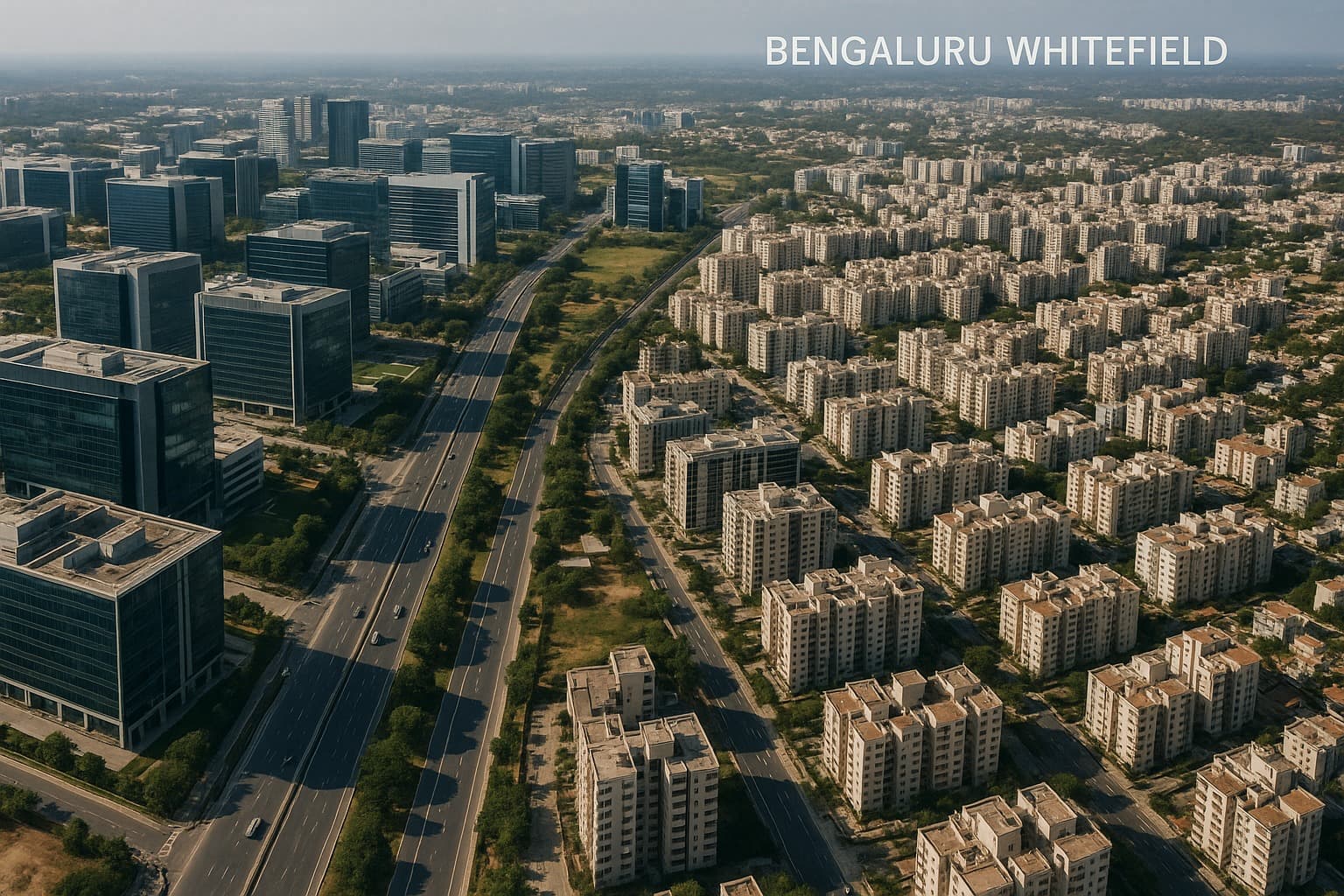How Job Hubs Shape Real Estate Markets in India
Summary
Job hubs significantly shape India's real estate markets, driving housing demand and price appreciation. IT corridors and business hubs in cities like Bengaluru, Pune, and Hyderabad create thriving residential ecosystems.

How Job Hubs Shape Real Estate Markets in India
Picture this: a new IT park opens on the outskirts of a city. Within months, the once-silent lanes nearby are filled with co-living spaces, buzzing restaurants, and billboards advertising “luxury 2BHKs minutes from your office.” That’s not a coincidence—it’s the magnetic pull of job hubs on real estate markets in India.
Work has always been at the heart of where people choose to live. In a country like India, where urban migration is rapid and the job market is constantly evolving, the influence of IT hubs, office hubs, and job clusters on housing demand cannot be overstated.
Why Jobs and Homes Are Connected
At its core, the equation is simple: where jobs go, homes follow. People don’t just move for a paycheck—they move for a life. They want homes close enough to offices to avoid traffic jams, in neighborhoods that offer schools, healthcare, and daily conveniences.
This is why property demand jobs is such a strong driver of urban growth. Every time a company sets up a large campus or an IT corridor expands, the nearby housing market feels the ripple almost immediately.
IT and Business Hubs: The New Real Estate Engines
The last two decades have transformed cities like Bengaluru, Pune, Hyderabad, and Gurugram into global IT and business hotspots. With them came a housing boom that continues even today.

Take Bengaluru’s Whitefield. Once considered “too far” from the city center, it turned into one of India’s hottest residential markets purely because of the IT boom. Similarly, Hinjewadi in Pune went from being farmland to a thriving township of apartments, malls, and schools—all because of the IT park.
This is the perfect example of IT and business hubs shaping property markets in real time.
The Domino Effect of Job Clusters
The impact of job hubs goes beyond just housing—it sparks a domino effect:
Housing Demand – Employees want apartments, villas, or co-living spaces close to offices.
Retail & Hospitality – Cafes, gyms, restaurants, and malls pop up to serve this working population.
Infrastructure Development – Roads, flyovers, and even metro projects are fast-tracked to connect these job-rich zones.
Property Prices Rise – As demand builds up, prices appreciate, giving both investors and end-users strong returns.
That’s why real estate growth near employment hubs is often more consistent and resilient than in purely speculative areas.
Case Studies: Cities Where Job Hubs Shaped Real Estate
1. Bengaluru
Known as India’s Silicon Valley, Bengaluru’s job hubs and IT corridors (Electronic City, Outer Ring Road, Whitefield) completely redefined its real estate map. The housing boom here wasn’t led by luxury—it was led by demand. Thousands of young professionals sought affordable apartments, creating one of the deepest housing markets in the country.
2. Pune
The Hinjewadi IT Park single-handedly made West Pune a residential magnet. Today, areas like Wakad, Baner, and Balewadi thrive because of their proximity to Hinjewadi. Investors who bought early have seen appreciation and strong rental returns.
3. Hyderabad
Gachibowli and HITEC City are shining examples of housing demand growth near India’s top job hubs. Once considered outskirts, they are now the heart of Hyderabad’s real estate, attracting both end-users and NRIs.
4. Gurugram
The presence of office hubs India—especially Cyber City and Golf Course Road—turned Gurugram into a high-rise paradise. Luxury apartments and gated communities mushroomed, catering to both expats and high-income professionals.
Why Investors Love Job Hubs
For investors, job hubs are a safer bet than speculative corridors. While infrastructure projects may take years to show results, job hubs create instant rental demand. Young professionals moving in for jobs need housing immediately, often preferring to rent before buying.
This steady rental income, coupled with long-term appreciation, makes property investment opportunities near job hubs in India a sweet spot for smart investors.
The Future: Tier-2 Cities Rising
Here’s an interesting shift. While metros remain the giants, Tier-2 cities are emerging as the next big real estate story. Places like Coimbatore, Indore, and Kochi are attracting IT parks, startups, and manufacturing hubs.
This job market expansion and its effect on housing demand is setting the stage for balanced growth. Unlike metros, where property prices are sky-high, Tier-2 cities offer affordability along with employment opportunities—a combination that appeals to both end-users and investors.
Work-from-Home and Hybrid Models

One might wonder—didn’t the pandemic change this? Yes, it did. Work-from-home briefly reduced the pressure on job hubs. But as hybrid models took over, the proximity-to-office factor is back in play. Professionals may not go to the office five days a week anymore, but they still prefer living within a reasonable commute.
In fact, hybrid work has made people prefer township projects near job hubs, which offer both home-office convenience and lifestyle amenities.
The Emotional Side of Job-Linked Housing
It’s not just numbers—it’s personal. Think about a young professional moving to Bengaluru for their first job. Their decision to rent or buy is rarely about the city at large; it’s about being 15 minutes from office, living near colleagues, and having cafes and gyms around. That emotional comfort zone keeps housing near job hubs in high demand.
This is the real estate boom in employment-rich Indian cities—it’s less about “where the city is growing” and more about “where the jobs are.”
Looking Ahead to 2025
By 2025, India’s economy is expected to keep growing, with IT, manufacturing, and startups creating new jobs. This ensures that job hubs driving real estate demand in India will remain a central theme. We’ll see:
More integrated townships near job hubs.
Rising co-living spaces for young professionals.
Appreciation in Tier-2 markets where new hubs are being developed.
In short, as long as India’s workforce grows, so will housing demand around its job clusters.
Final Thoughts
The link between jobs and homes is timeless. While infrastructure, lifestyle, and affordability matter, nothing shapes housing demand like employment opportunities. From Bengaluru’s IT corridors to Pune’s Hinjewadi, from Hyderabad’s HITEC City to Gurugram’s Cyber Hub, every boom story has been powered by jobs.
For buyers, this means looking at job hubs as a compass for smart decisions. For investors, it’s a reminder that real estate growth near employment hubs is where long-term value lies. And for cities, it’s proof that jobs don’t just create careers—they create communities.
Summary (100 words)
Job hubs are the beating heart of India’s real estate markets. From IT corridors in Bengaluru and Hyderabad to office hubs in Pune and Gurugram, employment clusters directly fuel housing demand growth. The presence of jobs creates a chain reaction—demand for homes, rising rentals, retail growth, and ultimately property price appreciation. In 2025, both metros and Tier-2 cities are witnessing a real estate boom in employment-rich areas, offering strong returns for investors and convenience for end-users. Simply put, job hubs and IT corridors shape real estate in India by turning work opportunities into thriving residential ecosystems.
